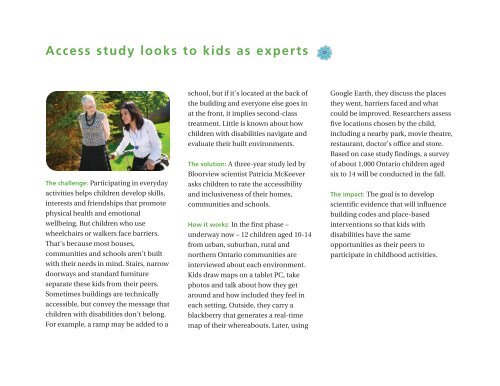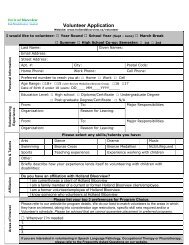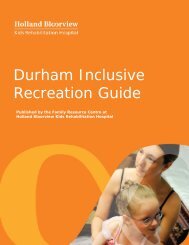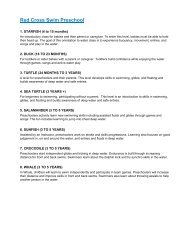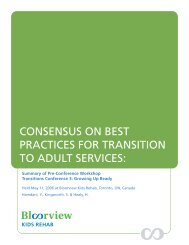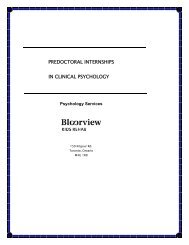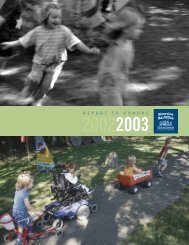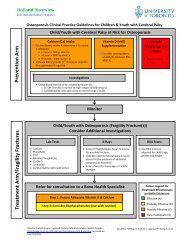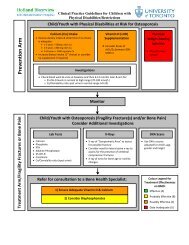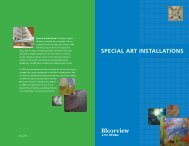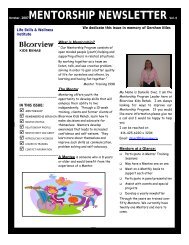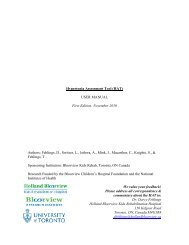View Annual Report Document - Holland Bloorview Kids ...
View Annual Report Document - Holland Bloorview Kids ...
View Annual Report Document - Holland Bloorview Kids ...
Create successful ePaper yourself
Turn your PDF publications into a flip-book with our unique Google optimized e-Paper software.
Access study looks to kids as experts<br />
The challenge: Participating in everyday<br />
activities helps children develop skills,<br />
interests and friendships that promote<br />
physical health and emotional<br />
wellbeing. But children who use<br />
wheelchairs or walkers face barriers.<br />
That’s because most houses,<br />
communities and schools aren’t built<br />
with their needs in mind. Stairs, narrow<br />
doorways and standard furniture<br />
separate these kids from their peers.<br />
Sometimes buildings are technically<br />
accessible, but convey the message that<br />
children with disabilities don’t belong.<br />
For example, a ramp may be added to a<br />
school, but if it's located at the back of<br />
the building and everyone else goes in<br />
at the front, it implies second-class<br />
treatment. Little is known about how<br />
children with disabilities navigate and<br />
evaluate their built environments.<br />
The solution: A three-year study led by<br />
<strong>Bloorview</strong> scientist Patricia McKeever<br />
asks children to rate the accessibility<br />
and inclusiveness of their homes,<br />
communities and schools.<br />
How it works: In the first phase –<br />
underway now – 12 children aged 10-14<br />
from urban, suburban, rural and<br />
northern Ontario communities are<br />
interviewed about each environment.<br />
<strong>Kids</strong> draw maps on a tablet PC, take<br />
photos and talk about how they get<br />
around and how included they feel in<br />
each setting. Outside, they carry a<br />
blackberry that generates a real-time<br />
map of their whereabouts. Later, using<br />
Google Earth, they discuss the places<br />
they went, barriers faced and what<br />
could be improved. Researchers assess<br />
five locations chosen by the child,<br />
including a nearby park, movie theatre,<br />
restaurant, doctor’s office and store.<br />
Based on case study findings, a survey<br />
of about 1,000 Ontario children aged<br />
six to 14 will be conducted in the fall.<br />
The impact: The goal is to develop<br />
scientific evidence that will influence<br />
building codes and place-based<br />
interventions so that kids with<br />
disabilities have the same<br />
opportunities as their peers to<br />
participate in childhood activities.


